In the mid-1960s, AMC was toying with building a 2-seat GT-style car that could compete with the Chevy Corvette. But since American Motors had fewer resources than GM, they waited until the Javelin pony car was about to see the light of day and used a shortened platform to pull it off. An AMX has 12 fewer inches in the wheelbase, so the rear seat could be removed. The car would be in production as a standalone model from 1968-70. This ’69 edition has a newly-rebuilt 390 V8 with most of the remaining work lies in the cosmetics department. It’s available here on craigslist in Santa Clara, California for $16,500 OBO.
The base powerplant in the AMX was a 290 cubic inch small block V8. For less than $350 extra you could order your AMX with the “Go Package” or “Go-Pack” which helped in the performance arena. That got you the 390 big block plus dual exhaust, upgraded cooling system, power disc brakes up front, limited-slip differential, a handling package, “Twin Grip” limited-step differential, and Magnum 500 sport wheels. You probably didn’t have to order the Go-Pack to get the 390, but we’re betting most of the takers did. Out of 8,293 AMX’s built for 1969, 3,620 had the 390 engine with a 4-speed manual, which is what’s in the seller’s car.
This ’69 AMX is finished in Bittersweet Orange Metallic and has some 70,000 miles on the odometer, but just 1,000 on a rebuilt motor. Upgrades include Hooker Headers, turbo mufflers, Mallory ignition system, plus rebuilt brakes, and a new master cylinder. The gas tank was removed and flushed, and a new AFB carburetor mounted atop the manifold. We’re told this combination works well and will smoke the rear tires when proper pressure is applied to the gas pedal.
The seller believes he’s the third owner of this AMX which was originally delivered in Sacramento. His period of ownership spans more than 30 years. While the paint and chrome are original, the body wears several small dents, including the driver’s side door and both front fenders. The only supposed rust on the car is around the rear window valance, although the floors behind the front seats have a lot of surface rust. The car was in storage from the 1980s until the recent work was performed and it’s exempt from California emissions tests.
Besides the Go-Pack box being checked when the car was built, factory air conditioning was ordered, although I thought you couldn’t get that with the 390 and there is no indication of a compressor under the hood now. It also has the Saddle Tan leather interior (code 936L), but the seats currently look to be wearing seat covers over top of other upholstery. The items that are not currently installed in or on the car are shown in boxes in a separate photo. It looks like that includes a spare door skin.
AMC dropped the car after 1970 when the Javelin was redesigned. The lackluster total sales of under 20,000 units probably didn’t justify a separate body. But the AMX name would continue via the Javelin in 1971-74 as a performance option, but with room for four passengers instead of two. As a muscle car, many consider the AMX undervalued today in the world of Mustang GTs and Camaro SS’s.
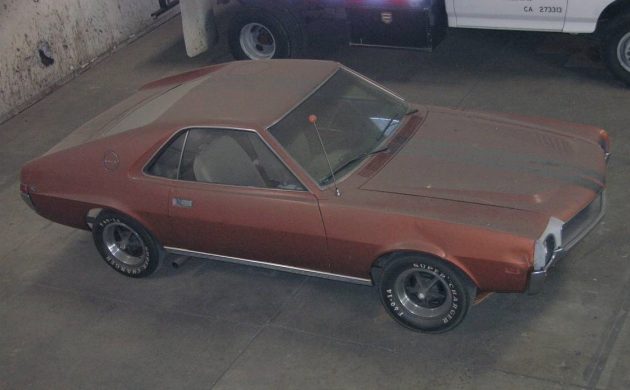
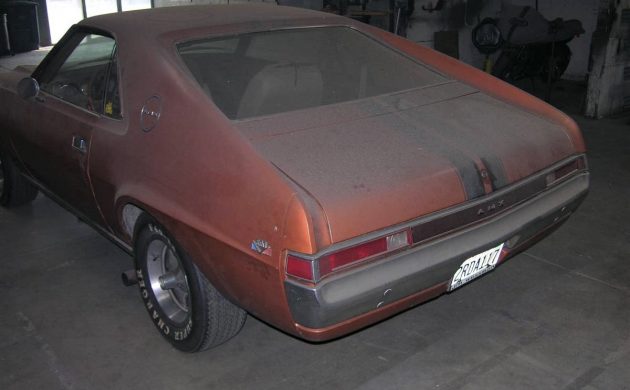
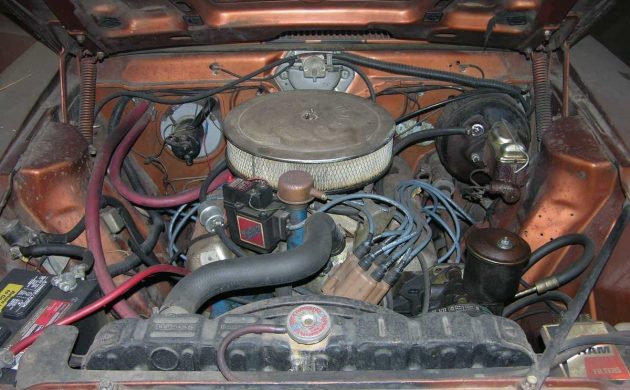
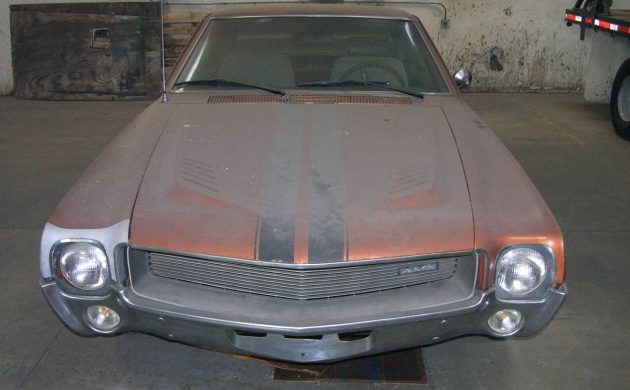
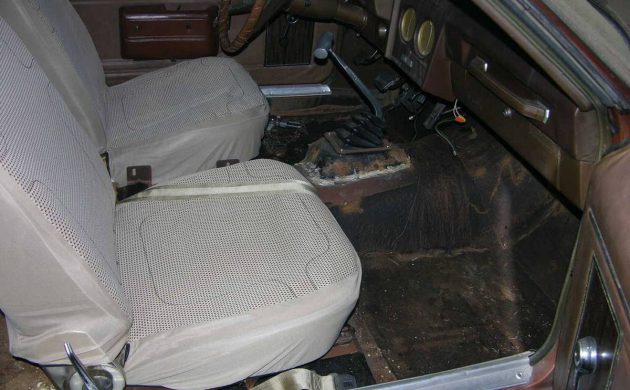
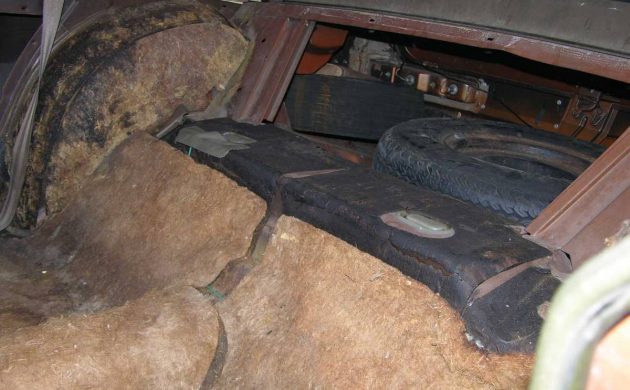


All the pieces are there, you just get to put it together.
It looks like a nice, honest car that needs someone to devote some time to it.
I would want to know how long ago the engine was rebuilt and then not run.
I would love to give it a rotisserie restoration (myself) to about a 90 point car so I could drive it every summer for the rest of my life.
I’d buff the paint, install the carpet, make it mechanically sound and drive it. It’s rough around the edges, but so what, it’s a relatively inexpensive way to get into a car that is currently functional and desirable. That equation instantly changes once you add in the cost of a restoration, which once completed will almost guarantee it’s condemnation to a permanent existence of sitting in a garage only to be let out for the occasional car show. I also like the 70’s and early-80’s speed equipment, those parts wouldn’t be going anywhere.
Steve R
I love these, don’t get me wrong…I believe the problem was the AMX wasn’t much distinguished from the Javelins, slightly shorter wheelbase may have helped handling slightly, few pounds less sure, but I bet a Jav back seat will bolt right in, minus any legroom, both were available same options, same engines, just think there wasn’t enough difference to separate the two side by side, I’d gladly own either of em, dad had a 69 javelin, I remember it well, think they shoulda brought more to AMX…
I believe AMC had one V8 block for this era vehicle. Displacement could be 290, 343, and 390 CI.
@Eric, AMC always had one small block. In the early incarnation it was a 290, 343, and 390. Later on it was 304, 360, and 401. They never made a bb engine
The 304, 360 and 401 had a slightly taller deck height and larger diameter head bolts.
Beautiful. Agree with Steve R. Buff it, go through the mechanicals and drive. Life is too short to spend tens of thousands on paint and body. First time down the road, a rock gets bounced off the giant truck in front of you. Ooops. I have a driver quality Corvette that I drive as much as possible without worrying about a bug crashing onto the bumper. Been there, done that. It is no fun.
No small block, big block in AMC world. In fact, that is only in Chevy world, but so many people miss-use it, that it is used in many genre’s. I even hear small block, big block Pontiac, when those also all had same size external dimensions. My favorite is someone calling the 301 a big block – LOL!
I believe the term holds true for Ford also…260, 289, 302 small block, 390, 428, 427, 429, 460 big block.
Chrysler also had small block and big block castings. some would say that they three castings: A & LA smallblocks; B series medium blocks; RB big blocks.
That engine might of been rebuilt a 1000 miles ago, but it sure wasn’t recently. Those filthily valve covers would at least have greaseie finger prints on them.